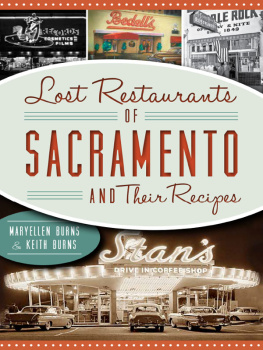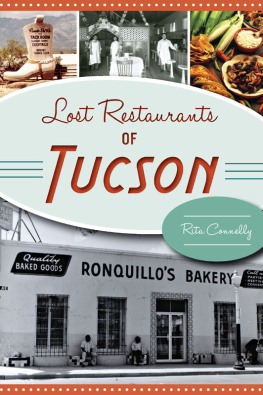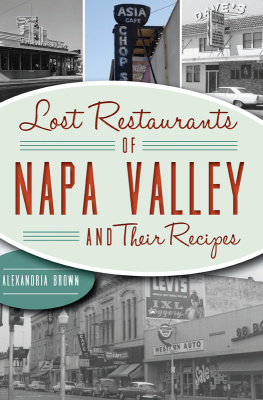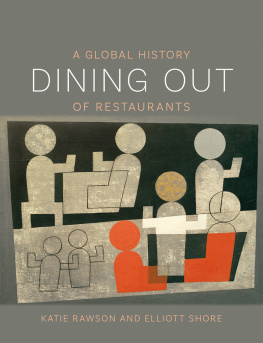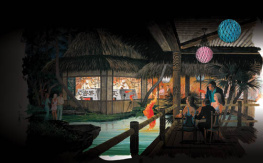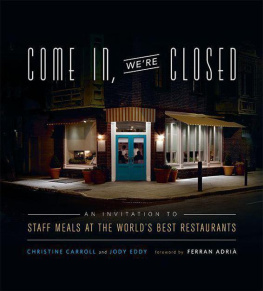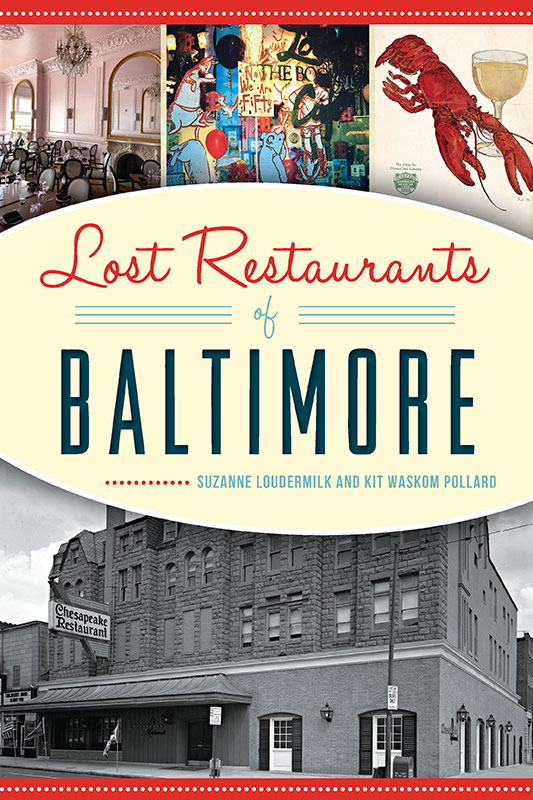


Published by American Palate
A Division of The History Press
Charleston, SC
www.historypress.com
Copyright 2019 by Suzanne Loudermilk and Kit Waskom Pollard
All rights reserved
First published 2019
E-Book edition 2019
ISBN 978.1.43966.840.5
Library of Congress Control Number: 2019945077
Print edition ISBN 978.1.46714.066.9
Notice: The information in this book is true and complete to the best of our knowledge. It is offered without guarantee on the part of the authors or The History Press. The authors and The History Press disclaim all liability in connection with the use of this book.
All rights reserved. No part of this book may be reproduced or transmitted in any form whatsoever without prior written permission from the publisher except in the case of brief quotations embodied in critical articles and reviews.
To our husbands, who gave us support when we needed it most.
Contents
Acknowledgements
We are grateful to Brian Boston; Micah Connor of the Maryland Historical Society; Jim Considine; Amy Davis; Rick K. Davis and Joyce V. Garczynski of Towson University; John DeFerrari; Paul Esbrandt; Patrick Ford; Peggy Fox; Charlie Gjerde; Spike Gjerde; Jenny Hope; Brennen Jensen; Elizabeth Large; John McGrain; Patty Novik; Francis ONeill of the Maryland Historical Society; Thea Osato; Jennifer Price; Jan Purnell; Steve Rivelis; Dan Rodricks; Jimmy Rouse; Karene Connolly-Smith; Rick Stielper of Carroll Architectural Shade; Anne Tallent; Justin Williams of the Baltimore Museum of Industry; Yuri Zietz of the Baltimore County Library; and William Zvarick. We also want to thank our families and everyone who had to listen to us talk about our work in progress.
Introduction
The story of Lost Restaurants of Baltimorebeloved restaurants that have closedis more than just a tale of eating establishments that have come and gone; it is a heartfelt story about the ever-changing landscape of Baltimore and the people who live there.
In this book, we will explore the stories behind thirty-five restaurants, from those that reigned supreme in the late 1880s to those whose impact in the 1990s and early twenty-first century influence our dining culture today. We will also include some stalwarts from Baltimore County. We know there are many more restaurants that deserve recognition, but unfortunately, space constraints limited our selection.
The world has changed a lot since the first restaurants in our book opened. Some of the earliest places were products of segregation, when inclusivity wasnt understood. The physical landscape shifted, too; construction projectslike Harborplace and Harbor Eastoffered new choices for dining, traffic patterns were rearranged, city dwellers decamped for the suburbs, and, just a generation later, they headed back to the city. Some restaurants were able to capitalize on the changes, while others werent so lucky. Some restaurants locations became inconvenient for customers, and some suffered when their cuisines were not popular anymore as diners tastes evolved. Some traditional dishesthink terrapin soup and heavy German farefell by the wayside as Americans expanded their palates. Huge menus with multiple pages gave way to shorter, more creative lists featuring seasonal and local ingredients.
Despite all of this, Baltimoreans are a nostalgic group of people who continue to celebrate the quirkiness of Charm Citys inhabitants. Locals always love a character: from the industrious and glad-handing Jimmy Wu to the dyspeptic charms of Morris Martick and namesake hosts like Bernie Lee and Hersh Pachino. Whether restaurants in Baltimore were driven by a single, sparkling leader or thrived because of a synchronized crew of many, they all influence todays restaurateurs, who are building establishments on the strengths and hard-learned lessons of those who came before.
Sometimes, a current restaurants homage to the past is more overt. One of the best-selling dishes on Chef Brian Bostons menu at the Milton Inn in Sparks, Maryland, is the filet Chesapeake. This was a dish found in several midcentury menus, including that of Peerces Plantation, where Chef Boston got his start. Mamas on the Half Shell in Canton pays tribute to Connollys Seafood House with a list of the defunct restaurants specialties on its menu. Though times change, Baltimore diners are always on the hunt for a restaurant that feels like home. And if theres a top-notch crab cake on the menu, thats even better!
While writing this book, we enjoyed talking to people about the restaurants they frequented that they now miss. During these conversations, we discovered that Jimmy Rouse learned the restaurant business while working as a waiter at Marticks. He then went on to successfully run Louies Bookstore Caf, which, in turn, inspired Spike Gjerde to open the bookstore caf, Bird in Hand, in Charles Village. Others, like Rob Cernak, absorbed the nuances of the trade from their families. Cernak started working at an early age with his parents, Richard and Rose, at Obryckis. His son, Rob Jr., is now general manager of the familys airport eateries. Their recollections about waiters and waitresses, the decor and the dishes they savored were thoughtful and comforting. Through their stories, we were reminded of all we love about Baltimore, its citizens and its food.
To pay respect to future chefs, we are donating a portion of our royalties to Maryland ProStart, a high school program that trains the restaurateurs of tomorrow. We cant wait to find out what their stories will be.
Thompsons Sea Girt House
CRAB CAKES AND MORE 18851991
When Thompsons Sea Girt House opened on Newkirk Street in Canton in 1885, Baltimore was a different place. Horses pulled carriages along the streets, the waterfront had not yet been fully industrialized and central air conditioning was decades away from widespread availability. But even then, seafood reigned supreme in Baltimore. And Thompsons was the place to get it.
Thompsons was named for its founder, George Thompson, and its location; girt means surrounded by the sea. The restaurant was originally located near a 450-foot pier that jutted into the Patapsco River. During the early twentieth century, the original building was replaced with a pavilion that looked out over the river. In 1949, the restaurant moved north, to a Govans location at the corner of York Road and Belvedere Avenue, where it remained until it closed in 1991.
Through three location changes and for over one hundred years, one thing remained consistent: crab cakes and other seafood dishes were front and center on the Thompsons menu. According to the Baltimore Sun, at a May 1894 party at the restaurant, the menu consisted of a breakfast of soft crabs, fish, fried chicken, beefsteak, muffins and coffee. The party guests were local brew masters and their families, who got together for an annual celebration that included food and several hours of rambling about the grounds and along the river shore. The restaurant was even a trendsetter; it was, reportedly, the first restaurant in the country to serve crab imperial. The iconic dish appeared on the menu in the late nineteenth century. Thompsons was frequently mentioned in local publications for more than its food; the Sea Girt House was often referenced as a landmark in articles reporting on maritime weather.
Next page

